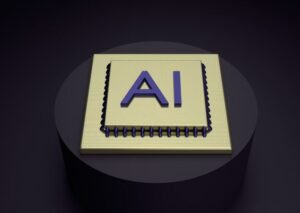What’s Neural Networks
A neural network is a powerful computational model inspired by the human brain. It consists of interconnected nodes known as artificial neurons or perceptrons, which work together to process and analyze complex data. These networks have gained popularity in recent years due to their ability to learn and make decisions from large datasets, leading to significant advancements in various fields.
Key Takeaways:
- Neural networks are computational models inspired by the human brain.
- They consist of interconnected artificial neurons that process complex data.
- Neural networks can learn and make decisions from large datasets.
Neural networks are designed to simulate the behavior of biological neural networks found in human brains. Like their biological counterparts, artificial neurons in neural networks are connected through synapses. Each connection or synapse has a weight associated with it, which determines the importance of the input data from one neuron to another. Through a process known as training, neural networks adjust the weights of these connections to optimize their performance and improve their ability to make accurate predictions.
*Neural networks can be trained to recognize patterns and relationships in data, enabling them to perform tasks such as image recognition, natural language processing, and even autonomous decision-making.
There are several types of neural networks, each with its own unique architecture and functionality:
- Feedforward Neural Networks: These networks have a unidirectional flow of information, moving from input layers to output layers. They are commonly used for tasks like classification and regression.
- Recurrent Neural Networks: These networks have feedback connections that allow information to flow in cycles. They are suitable for processing sequential data and tasks like speech recognition and language modeling.
- Convolutional Neural Networks: These networks are designed for processing grid-like data such as images. They utilize convolutional layers to extract important features and are widely used in computer vision tasks.
- Generative Adversarial Networks: These networks consist of two opposing neural networks: a generator and a discriminator. They are used for tasks like generating realistic images and data synthesis.
Applications of Neural Networks
Neural networks have become increasingly prevalent across various domains and industries due to their ability to solve complex problems. Some notable applications include:
- Self-driving cars
- Medical diagnosis and disease detection
- Financial forecasting and stock market predictions
- Natural language processing and translation
- Facial recognition and biometrics
| Application | Use Case |
|---|---|
| Social Media | Personalized content recommendations |
| E-commerce | Product recommendations based on user behavior |
Neural networks have revolutionized fields such as image and speech recognition, enabling computers to perform tasks previously thought to be exclusive to humans. With the advancement of machine learning algorithms and hardware capabilities, neural networks continue to push the boundaries of what is possible in artificial intelligence.
Future of Neural Networks
The future of neural networks holds tremendous potential. Researchers are constantly exploring new architectures, training algorithms, and optimization techniques to improve network performance and scalability. As technology continues to evolve, neural networks are expected to become even more versatile, capable, and integrated into our everyday lives.
- Improved training algorithms and reduced computation requirements
- Neural networks embedded in everyday devices and appliances
- Enhanced natural language understanding and communication
| Neural Network Type | Advantages | Disadvantages |
|---|---|---|
| Feedforward Neural Networks | Efficient in straightforward tasks | Not suitable for processing sequential data |
| Recurrent Neural Networks | Effective in handling sequential data | Prone to vanishing/exploding gradient problem |
| Convolutional Neural Networks | Highly effective in image processing | Memory-intensive and require substantial computational power |
Neural networks are shaping the future of artificial intelligence, enabling machines to mimic human-like capabilities. As we continue to explore their potential, it is clear that neural networks will play a crucial role in solving complex problems, advancing technology, and transforming numerous industries.

Common Misconceptions
1. Neural Networks are too complex for ordinary people to understand
One common misconception about neural networks is that they are too complex and only experts can understand how they work. In reality, while the inner workings of neural networks can be intricate, it is possible for ordinary people to grasp the basic concepts and benefits.
- Neural networks can be explained using simple analogies and visuals
- There are various online resources and tutorials available for beginners
- With basic math and programming knowledge, anyone can start learning about neural networks
2. Neural Networks can emulate human intelligence perfectly
Another misconception is that neural networks can perfectly emulate human intelligence. Although neural networks are inspired by the human brain and can perform complex tasks, they are not capable of replicating all aspects of human intelligence.
- Neural networks lack consciousness or self-awareness
- They do not possess emotions or subjective experiences like humans do
- Neural networks are focused on specific tasks and lack general intelligence
3. Neural Networks will replace human workers completely in the future
There is a misconception that neural networks will completely replace human workers in the future, resulting in widespread unemployment. While it is true that neural networks can automate certain tasks efficiently, they are unlikely to replace humans in all occupations.
- Some jobs require complex human interactions and creativity that cannot be replicated by neural networks
- Neural networks still require human oversight and intervention
- Advancements in technology often create new job opportunities rather than eradicating entire industries
4. Neural Networks are infallible and always produce accurate results
There is a misconception that neural networks always produce accurate and infallible results. While neural networks can be highly accurate, they are not devoid of errors or biases.
- Neural networks can produce incorrect or biased outcomes if trained on biased or insufficient data
- They may make mistakes when faced with situations they were not trained for
- Neural networks need continuous training and improvement to maintain accuracy
5. Neural Networks are a recent development in technology
A common misconception is that neural networks are a recent development in technology. However, the concept of neural networks has been around for several decades, with notable advancements dating back to the 1940s.
- Early neural network models were inspired by the human brain
- The field of artificial neural networks has been actively researched since the 1950s
- Today’s neural networks have benefited from increased computational power and large datasets

The Rise of Neural Networks in Artificial Intelligence
In recent years, neural networks have emerged as a powerful tool in the field of artificial intelligence. These intricate systems, inspired by the human brain, have shown remarkable capabilities in tasks such as speech recognition, image classification, and natural language processing. This article explores various aspects related to neural networks, showcasing their effectiveness through data-driven examples.
Neural Network Applications
Neural networks find numerous applications in our daily lives, revolutionizing various industries. The table below highlights three diverse fields where neural networks have made significant contributions:
| Application | Description | Example |
|---|---|---|
| Autonomous Vehicles | Neural networks enable self-driving cars to perceive surroundings, make driving decisions, and enhance safety. | Autopilot feature in Tesla vehicles |
| Medical Diagnosis | Neural networks aid doctors in diagnosing diseases, analyzing medical images, and predicting patient outcomes. | Detecting breast cancer from mammograms |
| Language Translation | Neural networks facilitate the translation of text or speech between different languages, improving accuracy and fluency. | Google Translate |
Deep Learning Frameworks
Deep learning frameworks provide the necessary infrastructure for neural networks to be built and trained efficiently. Here, we compare four widely-used frameworks based on their popularity, versatility, and community support:
| Framework | Popularity | Usability | Community Support |
|---|---|---|---|
| TensorFlow | High | Easy | Large and active community |
| PyTorch | Increasing | Intuitive | Rapidly growing community |
| Keras | Popular | Straightforward | Supportive online community |
| Caffe | Declining | Specialized use cases | Small, but dedicated community |
Neural Network Architectures
Neural network architectures define the overall structure and connectivity patterns of a network. The following table presents three popular architectures along with their respective characteristics:
| Architecture | Description | Advantages |
|---|---|---|
| Feedforward Neural Network | Simplest form of neural network where information flows in a single direction. | Easy to train and implement |
| Recurrent Neural Network | Allows feedback connections, enabling networks to retain information from previous time steps. | Effective in sequence modeling |
| Convolutional Neural Network | Designed for processing grid-like data, such as images, by leveraging shared weights and hierarchical patterns. | Highly effective in image classification tasks |
Training Neural Networks
Training neural networks involves iteratively adjusting their internal parameters to minimize errors. The table below compares two commonly used optimization algorithms:
| Algorithm | Description | Advantages |
|---|---|---|
| Gradient Descent | Iteratively adjusts the parameters by computing the gradient of the loss function. | Simple implementation, widely used |
| Adam | Combines the concepts of adaptive learning rates and momentum while adjusting the parameters. | Efficient, converges faster than many traditional methods |
Neural Network Performance Metrics
Evaluating the performance of neural networks requires quantifying their effectiveness. Here are three commonly used metrics:
| Metric | Description | Formula |
|---|---|---|
| Accuracy | Measures the proportion of correct predictions made by the network. | Correct Predictions / Total Predictions |
| Precision | Indicates the ability of the network to correctly identify positive predictions. | True Positives / (True Positives + False Positives) |
| Recall | Measures the ability of the network to find all positive instances. | True Positives / (True Positives + False Negatives) |
Challenges of Neural Networks
Despite their remarkable capabilities, neural networks also face certain challenges. The table below outlines three common challenges and their associated descriptions:
| Challenge | Description |
|---|---|
| Overfitting | When a neural network becomes excessively specialized to the training data, leading to poor generalization on new data. |
| Vanishing/Exploding Gradients | Issues in the backpropagation process, where gradients become extremely small or large, causing training instability. |
| Computational Resource Requirements | Training large neural networks can be computationally demanding, requiring powerful hardware and significant time. |
The Future of Neural Networks
Neural networks continue to evolve and are likely to play an increasingly important role in shaping the future of artificial intelligence. Their ability to uncover complex patterns, process vast amounts of data, and learn from experience holds great promise in solving some of humanity’s most pressing challenges.
Frequently Asked Questions
What’s Neural Networks?
Q: What is a neural network?
A: A neural network is a computational model inspired by the structure and functionality of the human brain. It consists of interconnected nodes, called artificial neurons, and is capable of learning from and making predictions or decisions based on input data.
Q: How do neural networks work?
A: Neural networks work by transmitting weighted signals through interconnected layers of artificial neurons. Each neuron takes the weighted sum of its inputs, applies an activation function to determine its output, and passes it along to the next layer. This process is repeated until the final layer produces the neural network’s output.
Q: What are the advantages of neural networks?
A: Neural networks offer several advantages, such as the ability to learn and make predictions from complex and non-linear data, adaptability to changing input patterns, parallel processing for faster computations, and the ability to generalize from examples to new inputs.
Q: What are the different types of neural networks?
A: There are various types of neural networks, including feedforward neural networks, recurrent neural networks, convolutional neural networks, and self-organizing maps. Each type is suited for different tasks and has its own architectural characteristics.
Q: What is training a neural network?
A: Training a neural network involves presenting it with labeled training data and adjusting the weights of the connections between neurons to minimize the difference between its predicted outputs and the true outputs. This is typically done using optimization algorithms like gradient descent.
Q: What is deep learning?
A: Deep learning is a subfield of machine learning that focuses on training deep neural networks, typically with multiple hidden layers. The depth of these networks allows them to learn hierarchical representations of data, enabling them to tackle more complex problems.
Q: What are some applications of neural networks?
A: Neural networks have been successfully applied in various fields, such as image and speech recognition, natural language processing, autonomous vehicle control, financial forecasting, and medical diagnosis, among others.
Q: What are the limitations of neural networks?
A: Neural networks can be computationally intensive and require substantial computational resources. They may also suffer from overfitting, where they become too specialized to the training data and struggle to generalize to new data. Additionally, training large neural networks can be time-consuming.
Q: Are neural networks the same as artificial intelligence (AI)?
A: Neural networks are a subset of artificial intelligence. While neural networks can be used to perform AI tasks, AI encompasses a broader range of techniques and methodologies beyond neural networks.
Q: Can neural networks be used in real-time applications?
A: Yes, neural networks can be used in real-time applications. However, the complexity and computational requirements of the network architecture and the size of the data being processed may influence the feasibility and latency of using neural networks in real-time scenarios.




